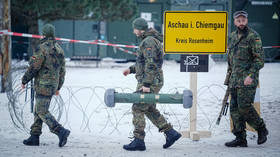Nordic countries move toward linking their air forces: 250 planes
The Nordic countries have moved to deepen air force cooperation to bolster the region’s air defenses. The initiative, covered by a Joint Declaration of Intent (JDI), takes place against the backdrop of persisting security tensions, provoked by Russia’s war against Ukraine, impacting the High North and Baltic Sea neighborhoods.
The first of its kind between the Nordic states, the JDI was signed March 16 at Ramstein Air Force Base in Germany by the commanders of the Swedish, Norwegian, Finnish and Danish air forces.
The concept of a joint Nordic air force, comprising over 250 modern front-line combat aircraft, has been the subject of periodic discussions between Nordic governments since the mid-1990s. Sweden’s and Finland’s unaligned status remained an impediment to advancing talks and joint initiatives.
With
, however, Nordic governments find themselves on more solid ground to discuss a common action plan to create a “mini NATO” that would deliver a formidable and unified air force capability.
The primary aim of the JDI is to strengthen air force cooperation between the four Nordic states, precipitating concrete joint initiatives to develop a strong regional air defense. The JDI envisages elevated
allowing them to operate in combination in all situations.
The Air-Defense Operations Concept (ADOC), embedded in to the JDI, envisions joint Nordic air force cooperation to be developed along four principal lines of action. It proposes the development of an integrated management structure for planning and executing of air operations.
Moreover, the concept anticipates the development of a flexible and sustainable support system, joint air situational awareness, as well as joint training and exercise activities between the four Nordic air forces.
Maj. Gen. Rolf Folland, the chief of the Norwegian Air Force (NAF), views the idea as a basis for creating a joint Nordic center for air operations that could also house the United States and Canada under a single command structure.
“There is obvious interest in a regional initiative for a joint air command on NATO’s northern flank. We know the conditions in the High North well, and we have a lot to learn from each other. With a total of almost 250 modern combat aircraft, this will be a large combat force that must be coordinated,” Folland said.
The last operational NATO headquarters in Norway, the Combined Air Operation Center (CAOC-3) at Reitan, located east of Bodø, was closed in 2008, with responsibility transferred to the alliance’s CAOC Finderup in Denmark.

